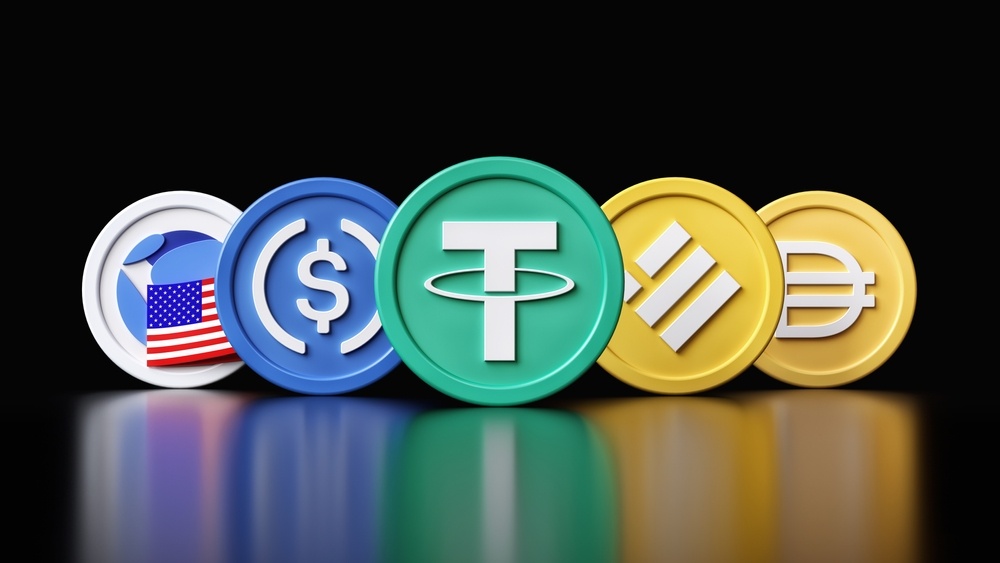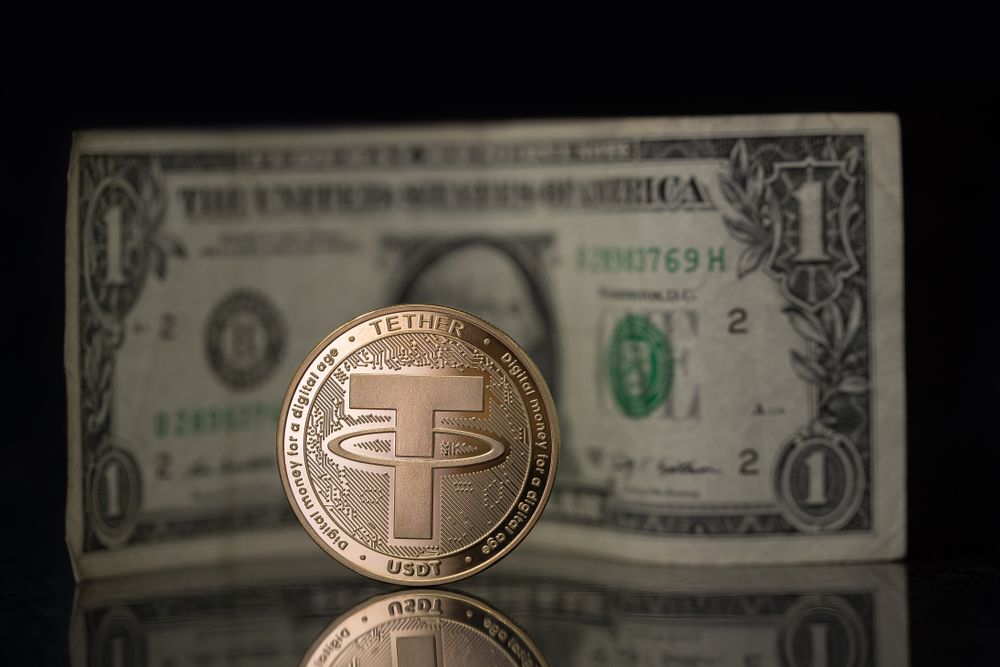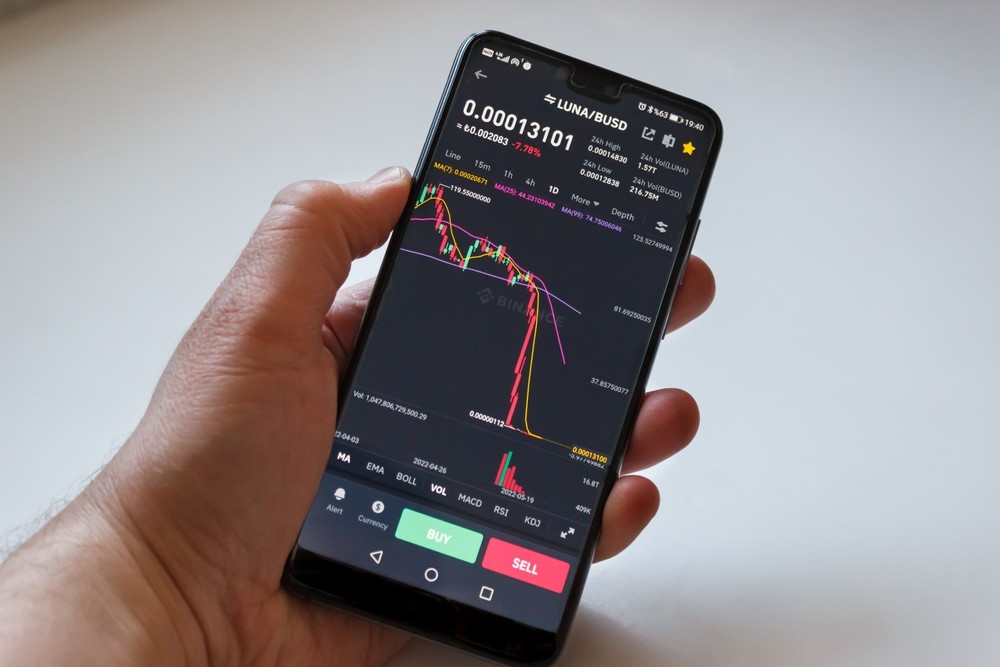The Story of Terra (LUNA) – How TerraUSD (UST) Led to a $200 Billion Wipe

Bitcoin (BTC) decreased to around $26,000 and Coinbase, the cryptocurrency exchange, fell 25% in terms of its earnings due to numerous shockwaves which occurred throughout the cryptocurrency space in May of 2022.
This selloff was triggered by the stablecoin known as TerraUSD (UST).
This occurred due to the fact that UST lost its peg to the U.S. Dollar (USD), and with it wiped out the support of its non-stable cryptocurrency partner known as LUNA, which dropped 99% and, as a result, led to the loss of $200 billion dollars.
Like within any market crash, people rushed to exit the market as the price tumbled.
With all of these developments occurring within the crypto market within the span of just a few weeks, you might be wondering what exactly went down, and how all of it works, or more specifically, what point of failure occurred that led to the system simply not working to support the pegged value of UST.
As such, we are going to go over just about everything that you need to know when it comes to the full story of the Terra (LUNA) cryptocurrency ecosystem and its overall downfall.
Stablecoins Explained

Throughout its years in the crypto space, the Terra cryptocurrency made quite a reputation for itself, and its success initially came from its algorithmic Stablecoin (UST).
But before we dive too into that, let’s go over what a stablecoin actually is, as well as how it works, so you can have an in-depth point of view at a later point in time when we go over UST specifically.
Cryptocurrency assets were initially created as a means of letting people essentially engage in the process of conducting financial transactions, all without any need or reliance on governments, banks, or any other form of financial institutions.
However, over time, while many major cryptocurrencies grew in market capitalization, such as Bitcoin (BTC) and Ethereum (ETH) as well others, they became extremely volatile cryptocurrencies that would either increase or decrease in terms of their value within the span of minutes.
What this means is that a cryptocurrency wasn’t really a stable way through which someone could send an amount of money from one place in the world to another without it shifting slightly in terms of its worth.
Let’s take Bitcoin (BTC) as an example. At its all-time high on November 10, 2021, Bitcoin was worth $69,044.77. Then with the downfall of TerraUSD (UST), the cryptocurrency decreased to around $26,000.
That’s a huge loss in value for anyone who initially invested in the cryptocurrency. Since then, it has recovered in value. However, it is clear that it is impossible for this cryptocurrency, as well as many others, to truly maintain a stable value throughout a larger span of time.
However, many cryptocurrency investors are in need of a reliable cryptocurrency that is utilized as a means of completing basic transactions throughout the decentralized finance (DeFi) space, and for this reason, stablecoins such as TerraUSD (UST) were created to fill this specific need from cryptocurrency holders.
Now, remember this, as it will be important later on when we take a deeper dive into how exactly this cryptocurrency plummeted in value.
Before we look at stablecoins, let’s quickly look at how FIAT money works. FIAT money is any government-issued currency that is not backed by a physical commodity. However, it is backed by the government that issued it.
FIAT money has given central banks, as a result of this, a lot more control over the economy. This is due to the fact that they have full control over how much money is printed. Some examples of FIAT money include USD, EUR, AUD, and others.
With that out of the way, we can finally move on to stablecoins. Stablecoins were created as a direct response to the volatility experienced by cryptocurrencies such as Bitcoin (BTC).
They are defined as cryptocurrencies that have a value that is tied to real-world assets, such as the U.S. Dollar, for example.
They are developed to be used as a form of payment, one that is not limited or restricted in any way by the rapid changes in the market, where they are not influenced by the downfall or spike in the value of other larger cryptocurrencies.
In other words, a stablecoin aims to have its value equal to a FIAT currency. Most commonly, this is the U.S. Dollar. To summarize, a stablecoin aims to be equal in value to the USD, where 1x of a specific cryptocurrency is equal to 1x USD or $1.

Ever since the crypto space started growing in terms of popularity, and with the rise of decentralized finance (DeFi), stablecoins have become a key component when it comes to creating a class of products in DeFi, where the transactions can be carried out without any middleman.
This means that there is no longer a requirement for banks, brokerages, or any other types of financial institutions.
All of the cryptocurrencies here are essentially similar due to the fact that they are all built on top of blockchain technology, which enables them to establish a secure ownership level across all of the users, and they can circulate on decentralized networks, which take advantage of blockchain technology and cryptography as a means of protecting users from counterfeiting or even fraud.
Keep in mind that, within traditional institutions, the value gets determined by what the market will bear, and many people can end up buying cryptocurrencies with the main goal of selling them at a later point in time when their value ends up increasing.
However, stablecoins are the opposite of this due to the fact that they are specifically designed not to change in value and always maintain their value of $1.
Here we can come to the conclusion that TerraUSD (UST) was a stablecoin specifically developed to always maintain its value to $1.With that in mind, let’s go over how different stablecoins work and how UST works specifically.
The Functionality Behind Stablecoins
A stablecoin is a cryptocurrency that can be backed by multiple assets. It can be backed, for example, by FIAT currencies such as the USD for example. However, some stablecoins can also be backed by other cryptocurrencies or even precious metals. Some might even go the extra distance and get backed by algorithmic functions, such as the case with UST>
Keep in mind that a cryptocurrency’s backing can also impact its overall level of risk. What this essentially means is that FIAT-backed stablecoins can be more stable due to the fact that it is linked to a centralized financial system. This system has authority, such as a bank that has the power to step in and control the prices when things become too volatile.
Stablecoins, which are not linked to any centralized financial systems, however, run the risk of changing quickly due to the fact that there is no regulatory body controlling what it’s pegged to.
Let’s go over the different types of stablecoins in a more in-depth way.
Crypto-Backed Stablecoins
Crypto-backed stablecoins are typically backed by other cryptocurrencies that are available throughout the broader crypto space.
Because their backing asset can be volatile, however, crypto-backed stablecoins are overcollateralized. This means that if a $1 crypto-backed stablecoin gets tied to an underlying crypto asset, which is worth $2, the crypto will lose value.
The stablecoin would need to have a system implemented to help it remain at $1. These are typically less stable assets.
FIAT-Backed Stablecoins
FIAT-backed stablecoins are by far one of the most popular and most implemented stablecoin types within the crypto space. You can think about them in the form of an I-owe-you (IOU), where you would use USD or a FIAT currency as a means of buying the cryptocurrency, which you can then, later on, redeem for your original currency.
However, unlike any other type of cryptocurrency available within the crypto space, where their value can essentially fluctuate up or down and be unstable, any FIAT-backed stablecoin can have small price fluctuations but ultimately remain at the $1 price point. However, they are new and have a limited track record alongside unknown risks as well.
Precious Metals-backed Stablecoins
These are other types of stablecoins that can utilize gold, for example or any other precious metal as a means of maintaining their overall value. Keep in mind, however, that these stablecoins are typically centralized. This centralization, however, is what keeps them a bit safer when it comes to experiencing price volatility due to the fact that gold has been seen as a hedge against stock market volatility and inflation which can make them an attractive option for traders throughout fluctuating markets.
Algorithmic Stablecoins
Then we need to have a look at algorithmic stablecoins. These are essentially cryptocurrencies that are not backed by any asset, which makes this a type of stablecoin that is the most difficult to realize in real-market scenarios.
They utilize an algorithm as a means of maintaining the coin’s value stable and preventing it from fluctuating.
The price of an algorithmic stablecoin can also be pegged to $1. However, at the point in time when the stablecoin increases in value, the algorithm can automatically release tokens into the supply and bring its overall price down.
Keep in mind, however, that if a stablecoin ends up decreasing under $1 in terms of its value, then the algorithm would cut down the supply as a means of bringing its value back up.
What this essentially means is that, while the number of tokens an investor can own will change, they will still reflect their overall share.
Because stablecoins are stable in terms of their value, they behave similarly to how FIAT currencies do while also providing users with the benefits found within blockchain technology.
Stablecoins are utilized as a medium of exchange. Due to the fact that they minimize the price volatility, they can achieve a level of utility that is separate from the ownership of legacy cryptocurrencies. Furthermore, stablecoins are still decentralized, and what this means is that they are not limited by the rules that are found typically within centralized systems.
The main reason why there was and still is so much interest surrounding stablecoins is due to the fact that they are built and designed to withstand volatility in a way that other cryptocurrencies cannot, all whilst also offering the benefits of mobility as well as accessibility.
Now that you have a higher level of understanding of what stablecoins are and how they essentially work, we can move on towards Terra (LUNA), its history, as well as its overall technology.
Terra (LUNA): Origins and Technology
Terra is a programmable blockchain platform that offers FIAT-pegged stablecoins with the goal of providing a higher level of stability in regard to cross-border payments.
By taking advantage of stablecoins, the Terra ecosystem attempted to provide users with low fees, instant settlement, and frictionless cross-border exchanges. Terra (LUNA) was originally founded in January of 2018 by two co-founders.

These co-founders are Daniel Shin and Do Kwon. Do Kwon became the CEO of Terraform Labs, the company behind the project. Terra (LUNA) was created in 2018 to facilitate the mass adoption of cryptocurrencies through creating digitally native assets which are price-stable against FIAT currencies.
The Terra blockchain was also created through the utilization of the Cosmos SDK, which is a framework that lets developers essentially create custom blockchains and build their own decentralized applications (dApps) for a variety of different use-cases.
Within the case of Terra, its blockchain was founded in January of 2018. However, the mainnet launched in April of 2019.
Terra had a supply of 1 billion tokens, and at the point in time when this number got exceeded, the tokens were burned until they returned to the equilibrium supply level.
Alongside all of this, Terra is a network aimed at allowing up to 10,000 transactions per second (TPS), with a transaction time of 2 seconds.
The fees on the network default to 0.1% and are capped at 1%.
With all of that surrounding the Terra (LUNA) cryptocurrency in mind, let’s now go over the infamous TerraUSD (UST) cryptocurrency. At the point in time when Terra was in its initial development phase, it set out a goal to essentially fulfill what Bitcoin originally wanted to be, and that is to become a peer-to-peer (P2P) electronic cash system.
In order to accomplish this goal, Terra created a system of stablecoins that have their value pegged to different assets, such as commodities or FIAT currencies.
The most popular among all of its stablecoins was TerraUSD (UST). This stablecoin was specifically created to track the price of the U.S. dollar, where 1 UST would always be equal in value to $1 USD.
This peg was achieved through the usage of the other cryptocurrency within the network, known as the LUNA token.
LUNA played a major role in the maintenance of the price of the stablecoin and initially reduced the market volatility so that it could remain as stable as possible.
Instead of relying on a reserve of assets as a means of maintaining its peg or value, such as competing stablecoins did, Terra assets represented algorithmically stabilized coins. Terra used smart contract-based algorithms as a means of keeping the value of UST at $1 by permanently destroying tokens, which is a process known as burning, where LUNA tokens were burned in order to create UST tokens.
What this means is that within this ecosystem, users can always swap LUNA for UST, or UST for LUNA, at a guaranteed price of $1, regardless of the value of each token at the time of the swap.
Throughout the swapping procedure, however, a percentage of LUNA gets burned, and the remainder gets deposited into the community treasury. These funds within the treasury can then get used as a means of investing in applications, servers, or anything else that could lead to the expansion of the broader Terra ecosystem.
Here’s how all of it worked. By burning a percentage of LUNA tokens, the number of overall tokens that are in circulation gets reduced.
What this means is that they become more scarce, which means that they also become more valuable. Furthermore, this is a project built on top of the Cosmos SDK, which is known for its interoperability between chains.
As such, Terra can essentially bridge to other blockchain networks, such as Ethereum, BNB Smart Chain, Harmony, and Osmosis, which leads to a higher level of interoperability between the tokens throughout non-native ecosystems.
It is also important to note that Terra utilizes the Delegated Proof-of-Stake (DPoS) consensus protocol known as “Tendermint” to achieve its consensus. Here is how all of it works.
Holders could, essentially, delegate their funds to validators that are certified. These are individuals or groups of people that are responsible for the proposition of new blocks within the blockchain.
Furthermore, they can secure as well as add new transactions to the blockchain network, and LUNA token holders can also delegate their coins to the validator.
The more coins they delegate to them, the more power they will have when it comes to proposing new blocks of transactions, voting on their validity, and earning rewards.
As such, they essentially play a part in the governance of the overall blockchain network.
Then, validators are responsible for the process of running the Terra network program by utilizing a full node. The full node here validates the transactions and blocks within the blockchain, and the software that gets used by Terra is known as the Terra Core.
Here, the full node validators are able to run the latest version of the software without any lag or downtime and could also stabilize the price of Terra stablecoins by arbitraging any deviation from the peg.
Every validator has specific voting power, and this power is weighted in accordance with the total number of coins that are delegated to the stake, which includes their own coins.
Those that have the biggest stake within the pool have the highest chance of adding new blocks to the chain in exchange for the staking rewards gained by the transaction fees.
Furthermore, LUNA as a cryptocurrency can exist as a bonded coin> Which means that it can be staked or delegated to a stake pool, an unbonded coin, which is a coin that is traded freely and not committed to any stake pool, or it can even be an unbonding coin, which is a coin that has been withdrawn from staking or delegating, and can take up to 21 days to complete the procedure, a point in time in which the token cannot be canceled.
To summarize all of this, Terra was initially developed to be utilized as a global, user-friendly platform for electronic cash. Each of the transactions that took place incurred a computational fee which is typically under 1% of the transferred value, and this went to the validators in the form of a reward. Users could pay with the Terra stablecoin easily, and merchants could accept the cryptocurrency as a means of lowering their costs.
Terra could also be used for lending, borrowing, insurance, investing, and at times even charities.
It was all looking really well for the Terra (LUNA) and TerraUSD (UST) cryptocurrencies, so now you might be wondering how all of this led to $200 billion in value collapsing. We will now be going over the collapse of Terra.
The Collapse of Terra and How It Erased $200 Billion From the Crypto Space
Let’s imagine a scenario where you are a hard worker, and ever since you began your career, you have been dreaming of having financial freedom. Now let’s imagine that you have a friend who is about to introduce you to Terra (LUNA) for the very first time.
They introduce you to Terraform Labs, the company behind the project, specifically.
They claim that this is a low-risk investment, where you can earn 20% a year on your deposit, and if you would put in just $100 or even less from your paycheck, you could make decent returns on your investment.
The website states all of the aforementioned information that we just discussed, specifically, how it is using stablecoins. Many of the people who jumped into Terra (LUNA) like this ended up losing a lot of their life savings which they poured into the project.

Let’s go over how this happened. UST was meant to remain at $1. LUNA was meant to absorb all of the volatility.
One could buy UST on cryptocurrency exchanges or could exchange LUNA for it throughout the system. At all costs, the system aims to keep everything at equilibrium.
There were even financial incentives for people to trade and swap LUNA and UST, in whichever direction, which helped the system stay in this equilibrium.
An algorithm was in charge of managing all of it and ensuring that it all worked.
The major problem here was that the system, by design, aimed at doing this no matter what happened to UST’s market price on other exchanges.
If the peg begins to slip, the risks begin to pile up, and people might jump out of the UST token into other alternative stablecoins. This would, in turn, cause the LUNA token to fall.

The algorithm would then print more LUNA in order to keep the peg, so the price drops even more. Now, this is a solid solution for smaller dips in value, but at a point in time where the selling pressure is too high, there can be a feedback loop where a lot of people are selling and the system printing evermore LUNA as a means of trying to keep the balance. This is called a death spiral.
However, there was another issue with the system. It had grown too quickly, and investors that deposited UST into the Terra system were receiving a 20% yield. This high return was what initially attracted many people to the service in the first place. Terra grew rapidly because of it.
Now, instead of the market deciding interest rate, Do Kwon wanted this rate of 20% to be fixed, always. To achieve this, it was partly subsidized by the company, while the rest was from the collateral in another crypto.
However, as the project grew, more and more money needed to be paid out. Specifically, around $7 million were paid out in interest per day, every day.
Do Kwon also made the mistake of letting people take out their deposits at any point in time. However, this rapid growth meant that the system was extra vulnerable to mass withdrawals all at once.
Unaware of this, Do Kwon caused major elements that would contribute to the disaster.
The rapid and massive growth, thanks to the appealing 20% return and the risk of mass withdrawals, resulted in its ultimate collapse. Many skeptics ended up criticizing Terra, claiming that its system was unsustainable.
In 2021, as the wider cryptocurrency market began to turn south, the yields, as well as the other stablecoins and tokens, began to fall.
However, Do Kwon’s fixed 20% yield on UST became increasingly attractive, and more people started going to the project. By April of 2022, the LUNA coin was trading at over $100 USD per token, and the whole system was valued at $45 billion dollars.
The Terra (LUNA) system was also used in hundreds of decentralized applications, as well as in millions of payment systems on a global scale. Terraform Labs dedicated a reserve of $450 million dollars and $1 billion dollars worth of Bitcoin (BTC) to defend the peg.
Starting on May 9, 2022, people began to notice that the one-dollar peg that was promised by TerraUSD (UST) started dropping. Headlines were made when UST began to break from the secure peg of $1 USD to $0.92.
This disaster began to kick off with a series of major withdrawals from the interest-yielding UST system. The amount was around $4 billion.
A single wallet also managed to dump $84 million dollars worth of UST on the Ethereum blockchain and $108 million dollars on the Binance crypto exchange. These led to calls from the company that this was a coordinated attack.
At this point, UST started to trade at $0.80, then $0.75. Here, panic started to occur. Some users began to pull their money out, and conspiracy theories started to occur online. When even more users began to pull their funds, the network became congested.
The Luna Foundation Guard (LFG), an organization created as a means of supporting the Terra ecosystem, announced a $1.5 billion emergency loan to restore the peg to the U.S. Dollar, but this failed, as UST fell to $0.50, then $0.20. LUNA also started crashing from $70 to $50 to $10, and so on. The hyperinflation of LUNA started happening right in front of everyone. The outcome of this led to the downfall of $200 billion dollars of market capitalization.
LUNA went from an all-time high of $119.18 on April 5, 2022, to virtually having no value at $0.
On May 13, 2022, Terraform Labs halted the Terra blockchain. The company’s attempt to stabilize the system also resulted in a failure.
The Aftermath of Terra (LUNA)’s Downfall

On May 16, 2022, there was an announcement that the Polygon Team began working with the Terra project in order to help them migrate to the Polygon Network. Ryan Wyatt, who is the CEO of Polygon Studios, tweeted that they will help different Terra.

Furthermore, the co-founder of Ethereum (ETH), Vitalik Buterin, also said that Terra (LUNA) should protect the smallholders and not the whales.

Binance’s CEO, Changpeng Zhao, tweeted on May 15 that he confirmed that the exchange did not hold any UST except for what the exchange gets as a trading fee.
In all of the chaos that has occurred, Do Kwon ended up receiving a lot of backlash. An intruder visited his home. Following the intrusion, Do Kwon called for police protection due to the fact that strangers started coming in uninvited.

Then on May 17, we saw Do Kwon release another LUNA revival plan, where he announced plans toward forking the Terra chain into a new chain without the algorithm stablecoin. Terra’s legal team resigned in the wake of the UST and LUNA collapse.
Here, General counsel Marc Goldich, chief corporate counsel Lawrence Florio, and regulatory counsel Noah Axler all left the company. Emin Gün Sirer from Avalanche (AVAX) said that this situation is even worse than Mt. Gox Incident. Mt. Gox was, at the time, the biggest crypto exchange in its prime. It went bankrupt in February of 2014, however, after a massive hack caused a high drop in the value of Bitcoin (BTC).
The Bottom Line

Throughout numerous discussions online, there are numerous discussions as to how all of this came to be.
Some believe that this was a coordinated attack, which is visible on the blockchain, where one or two actors bought a massive amount of UST with Bitcoin, and then dumped that UST on the market, even at a loss, just to bring the system down.
Some are predicting that this could be a large hedge fund, however, note that solid evidence is yet to be found, but this might change as the investigation of this crash continues. In fact, there might be some factors that are still unknown to the public that could come to light.
However, there is also the possibility that this crash could have also been avoided if that 20% gained from deposits in UST had a withdrawal waiting time, for example, a 7-day, 14-day, or 30-day time frame in which they were locked so that panics like this would not be a possibility.
However, it is clear that this has left a mark on the future of stablecoins, as the trust, specifically within the technology behind stablecoins, has been broken for now. Even stablecoins within projects that are a lot more responsible at handling their tokens are going to take some heat, and it will take a lot of faith for people to trust them again.
This is unfortunate, however, due to the fact that stablecoins were at one point in time seen as safe.
People were utilizing them as a “bank account” in order to store their savings and earn interest when a regular bank did not give them the opportunity to do so.
In other words, these people were just trying to avoid the crazy speculations associated with the crypto market and just wanted to find something stable but ultimately found themselves in one of the biggest crypto disasters thus far.
This serves to be a lesson to all current as well as future investors.
Within an investment of just about any kind, no matter how safe the investment might seem, if there exists a counterparty risk, then a rule should be followed, and this rule is to never invest more than you can afford to lose.
For the time being, remember that there are numerous other stablecoin projects currently available, and not all of them utilize a similar algorithmic stablecoin structure as TerraUSD (UST) did.
